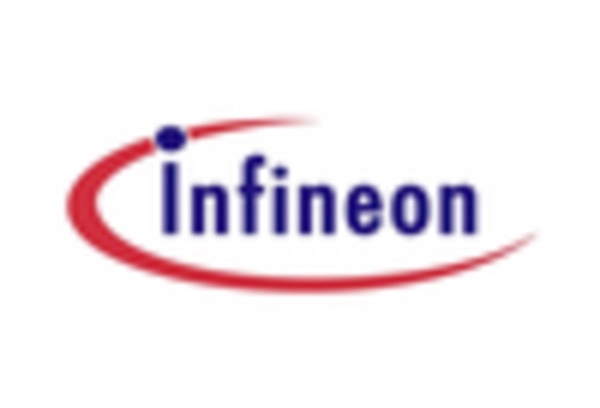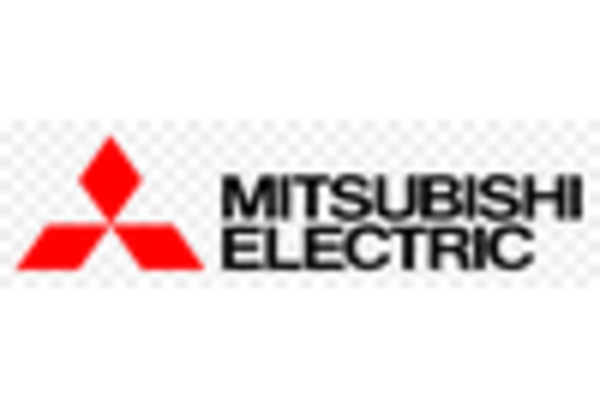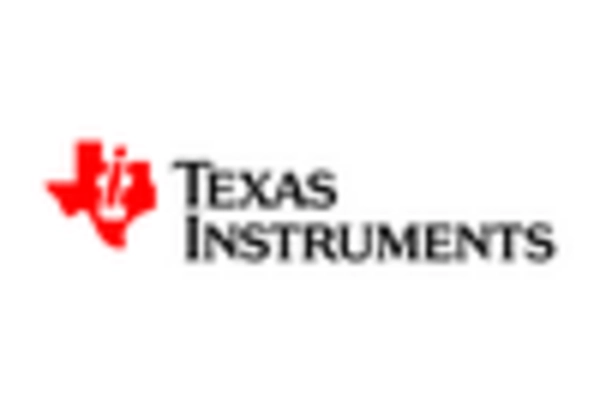Rising Industrial Automation
The thyristor market is experiencing a notable surge due to the increasing adoption of industrial automation across various sectors in the US. As industries strive for enhanced efficiency and productivity, thyristors play a crucial role in controlling power and managing electrical loads. The market for thyristors is projected to grow at a CAGR of approximately 6.5% from 2025 to 2030, driven by the need for reliable and efficient power management solutions. Industries such as manufacturing, oil and gas, and chemicals are increasingly integrating thyristor-based systems to optimize their operations. This trend indicates a robust demand for thyristors, as they are essential components in automated systems, contributing to the overall growth of the thyristor market.
Growth in Consumer Electronics
The thyristor market is also benefiting from the growth in the consumer electronics sector in the US. With the increasing demand for electronic devices, there is a corresponding need for efficient power management solutions. Thyristors are widely used in various consumer electronics applications, including power supplies and lighting systems. The consumer electronics market is expected to reach $400 billion by 2026, which could further stimulate the demand for thyristors. This growth indicates that as consumer electronics continue to evolve, the reliance on thyristors for efficient power control will likely increase, thereby enhancing the overall landscape of the thyristor market.
Expansion of Smart Grid Technologies
The ongoing expansion of smart grid technologies in the US is significantly influencing the thyristor market. Smart grids require advanced power electronics for efficient energy distribution and management, where thyristors are pivotal. The integration of renewable energy sources into the grid necessitates the use of thyristors for effective power conversion and control. As the US government invests in modernizing the electrical grid, the demand for thyristors is expected to rise. Reports suggest that the smart grid market could reach $100 billion by 2026, with thyristors being integral to this transformation. This growth trajectory highlights the importance of thyristors in enhancing grid reliability and efficiency, thereby propelling the thyristor market forward.
Increased Focus on Energy Efficiency
A growing emphasis on energy efficiency in the US is driving the thyristor market. As businesses and consumers seek to reduce energy consumption and lower costs, thyristors offer effective solutions for power control and management. The implementation of energy-efficient technologies is projected to save the US economy approximately $1 trillion by 2030, creating a favorable environment for thyristor adoption. Industries are increasingly utilizing thyristors in applications such as motor drives and lighting controls, which are essential for achieving energy savings. This trend suggests a sustained demand for thyristors, as they are vital components in energy-efficient systems, thereby supporting the expansion of the thyristor market.
Advancements in Electric Power Systems
Advancements in electric power systems are significantly impacting the thyristor market. The transition towards more sophisticated power systems, including high-voltage direct current (HVDC) technology, relies heavily on thyristors for efficient power conversion and transmission. The US is witnessing a shift towards HVDC systems to improve grid stability and reduce transmission losses. This transition is expected to create a market opportunity worth billions, as the demand for thyristors in HVDC applications grows. The increasing complexity of power systems suggests that thyristors will remain a critical component, thereby driving the growth of the thyristor market in the coming years.














Leave a Comment